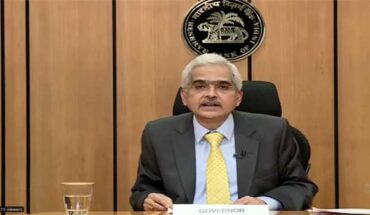Giridhara R Babu on difficulty in dealing with an ever-evolving virus amid socioeconomic disparities
After reeling under the onslaught of the COVID-19 pandemic for over a year, the world is now waiting for some respite. “How is the pandemic going to end?” is the question on everyone’s mind. But the end to the pandemic will not be instantaneous, like an absolute full stop to the replication of the virus. In fact, there may not be an end to the virus at all. The virus is evolving to cohabit with humans, and this can include a range of possibilities, from the virus becoming less lethal, more infectious to it becoming virulent. Nonetheless, the SARS-CoV-2 virus is likely to remain alive and around.
There has been a reduction in the incidence, severity, and mortality related to COVID-19 locally in some countries, including India, which meets the definition of what is termed as “control”, by Walter R. Dowdle, a former deputy director of the Centers for Disease Control and Prevention (CDC).
However, while the world is trying to come to terms with cohabiting with the virus, a recent article published in The Lancet and some well-intentioned experts are pushing the envelope by advocating an “elimination strategy”, otherwise known as the zero-COVID-19 strategy, wherein replication of the virus is reduced to a bare minimum and no new cases occur in a defined geographical area. The strategy has three elements — rapid reduction in the number of infections to zero, creation of virus-free green zones, and prompt outbreak management when new cases occur occasionally.
Rich countries have found a shortcut for the elimination strategy — to vaccinate every citizen in the country. The plan is well-suited for geographically isolated countries that can afford strict border control measures, such as New Zealand. Even there, the goal of zero COVID-19 cases is elusive since the virus continues to be in circulation in other countries. Firstly, the risk of infection from elsewhere, and thus outbreaks, would always be imminent. Secondly, there has to be universal coverage of vaccines with consistent upgrades, as the pace of vaccine development may not match the new variants’ emergence. Thirdly, a zero-COVID-19 strategy will worsen global health inequities by creating green zones of free travel among richer countries, thus alienating
poorer nations.
A quick look at the gains in eliminating other diseases does not offer an optimistic scope for COVID-19. Even though elimination programmes for measles and neonatal tetanus have been ongoing for more than 20 years now, the goals have not been completely realised. Polio, eradicated from southeast Asia, is still endemic in Afghanistan and Pakistan.
Maternal and neonatal tetanus, which has an 80% to 100% case fatality rate, caused deaths of nearly 25,000 newborns in 2018. Despite the global efforts to vaccinate children over the last few decades, these preventable diseases still remain major public health challenges in the developing world.
So far, there is no empirical evidence to suggest how eliminating the SARS-CoV-2 virus is feasible in the near term. Nearly 90% of 100 immunologists surveyed by the science journal Nature think that the virus will become endemic, i.e., some regions will see a constant presence of COVID-19. The level of endemicity depends on how the world reduces inequities of all kinds, including access to vaccines, and how well public health measures, such as containment, are
followed.
We need pragmatic measures for the realistic goal of saving lives. This calls for ensuring that disease control measures are implemented globally and ramping up vaccine coverage for vulnerable people. In addition to meticulous review at the country and regional level, vaccine coverage for the vulnerable population across the globe is an immediate necessity. The world needs to increase the current pace of vaccination 4.3 times by vaccinating 6.4 million persons per day, compared to the current rate of 1.46 million per day, to cover just 30% of the vulnerable population with a single dose in a year. If there is a clear resolve, this is feasible. This needs to be enabled by mapping the elderly and persons with comorbidities on a priority basis and vaccinating them.
So long as disease control is neglected in even a few parts of the world, every other part is at risk of importing infections due to free travel. Without these necessary life-saving measures in every country, the developed world, too, is not immune. Instead of isolated strategies for a few countries, what is needed is a global leadership and resources to vaccinate the vulnerable population and strengthen epidemiological and genomic surveillance for COVID-19.
The COVID-19 pandemic has exposed the flaws in our preparedness and inefficient public health systems that lead to disproportionately high morbidity and mortality among the poor and the vulnerable. The pandemic has also reversed the gains made in programmes like tuberculosis control, caused economic hardships, worsened inequalities, and pushed the poor towards the brink of catastrophe. We cannot let our focused efforts against COVID-19 ruin the progress made in other disease control programmes and our commitment to Sustainable Development Goals (SDGs). It is also essential to resume pursuing the agenda of Universal Health Coverage (UHC).
Global elimination of COVID-19 in the immediate term is a tricky goal — the zero-COVID-19 strategy comes with zero evidence of feasibility, seeks luxury that few countries can afford, does not reflect field realities, and, if adopted, may result in diverting most of our attention, funds, and time. Excessive focus on one virus in select countries will only worsen the poor global preparedness to fight other pandemics in future or tackle the devastating burden of non-communicable diseases.
For global health, every idea must be assessed based on its merit while ensuring that there is maximisation of benefits for people across the world. At this stage of the pandemic, the goal of elimination will divert focus and steer the world in a different direction altogether. A pragmatic goal of controlling COVID-19, not elimination, combined with a renewed emphasis on UHC can restore and rejuvenate an ailing healthcare system and bolster our progress towards realistic goals.
There has been a reduction in the incidence, severity, and mortality related to COVID-19 locally in some countries, including India, which meets the definition of what is termed as “control”, by Walter R. Dowdle, a former deputy director of the Centers for Disease Control and Prevention (CDC).
However, while the world is trying to come to terms with cohabiting with the virus, a recent article published in The Lancet and some well-intentioned experts are pushing the envelope by advocating an “elimination strategy”, otherwise known as the zero-COVID-19 strategy, wherein replication of the virus is reduced to a bare minimum and no new cases occur in a defined geographical area. The strategy has three elements — rapid reduction in the number of infections to zero, creation of virus-free green zones, and prompt outbreak management when new cases occur occasionally.
Rich countries have found a shortcut for the elimination strategy — to vaccinate every citizen in the country. The plan is well-suited for geographically isolated countries that can afford strict border control measures, such as New Zealand. Even there, the goal of zero COVID-19 cases is elusive since the virus continues to be in circulation in other countries. Firstly, the risk of infection from elsewhere, and thus outbreaks, would always be imminent. Secondly, there has to be universal coverage of vaccines with consistent upgrades, as the pace of vaccine development may not match the new variants’ emergence. Thirdly, a zero-COVID-19 strategy will worsen global health inequities by creating green zones of free travel among richer countries, thus alienating
poorer nations.
A quick look at the gains in eliminating other diseases does not offer an optimistic scope for COVID-19. Even though elimination programmes for measles and neonatal tetanus have been ongoing for more than 20 years now, the goals have not been completely realised. Polio, eradicated from southeast Asia, is still endemic in Afghanistan and Pakistan.
Maternal and neonatal tetanus, which has an 80% to 100% case fatality rate, caused deaths of nearly 25,000 newborns in 2018. Despite the global efforts to vaccinate children over the last few decades, these preventable diseases still remain major public health challenges in the developing world.
So far, there is no empirical evidence to suggest how eliminating the SARS-CoV-2 virus is feasible in the near term. Nearly 90% of 100 immunologists surveyed by the science journal Nature think that the virus will become endemic, i.e., some regions will see a constant presence of COVID-19. The level of endemicity depends on how the world reduces inequities of all kinds, including access to vaccines, and how well public health measures, such as containment, are
followed.
We need pragmatic measures for the realistic goal of saving lives. This calls for ensuring that disease control measures are implemented globally and ramping up vaccine coverage for vulnerable people. In addition to meticulous review at the country and regional level, vaccine coverage for the vulnerable population across the globe is an immediate necessity. The world needs to increase the current pace of vaccination 4.3 times by vaccinating 6.4 million persons per day, compared to the current rate of 1.46 million per day, to cover just 30% of the vulnerable population with a single dose in a year. If there is a clear resolve, this is feasible. This needs to be enabled by mapping the elderly and persons with comorbidities on a priority basis and vaccinating them.
So long as disease control is neglected in even a few parts of the world, every other part is at risk of importing infections due to free travel. Without these necessary life-saving measures in every country, the developed world, too, is not immune. Instead of isolated strategies for a few countries, what is needed is a global leadership and resources to vaccinate the vulnerable population and strengthen epidemiological and genomic surveillance for COVID-19.
The COVID-19 pandemic has exposed the flaws in our preparedness and inefficient public health systems that lead to disproportionately high morbidity and mortality among the poor and the vulnerable. The pandemic has also reversed the gains made in programmes like tuberculosis control, caused economic hardships, worsened inequalities, and pushed the poor towards the brink of catastrophe. We cannot let our focused efforts against COVID-19 ruin the progress made in other disease control programmes and our commitment to Sustainable Development Goals (SDGs). It is also essential to resume pursuing the agenda of Universal Health Coverage (UHC).
Global elimination of COVID-19 in the immediate term is a tricky goal — the zero-COVID-19 strategy comes with zero evidence of feasibility, seeks luxury that few countries can afford, does not reflect field realities, and, if adopted, may result in diverting most of our attention, funds, and time. Excessive focus on one virus in select countries will only worsen the poor global preparedness to fight other pandemics in future or tackle the devastating burden of non-communicable diseases.
For global health, every idea must be assessed based on its merit while ensuring that there is maximisation of benefits for people across the world. At this stage of the pandemic, the goal of elimination will divert focus and steer the world in a different direction altogether. A pragmatic goal of controlling COVID-19, not elimination, combined with a renewed emphasis on UHC can restore and rejuvenate an ailing healthcare system and bolster our progress towards realistic goals.
See also Acer Launches “Acerpure” in India: New Era of TVs, Air Purifiers, and Personal Care Devices
Giridhara R. Babu is Professor and head, Lifecourse Epidemiology, at the Indian Institute of Public Health, PHFI, Bengaluru. Views expressed are the author’s own






